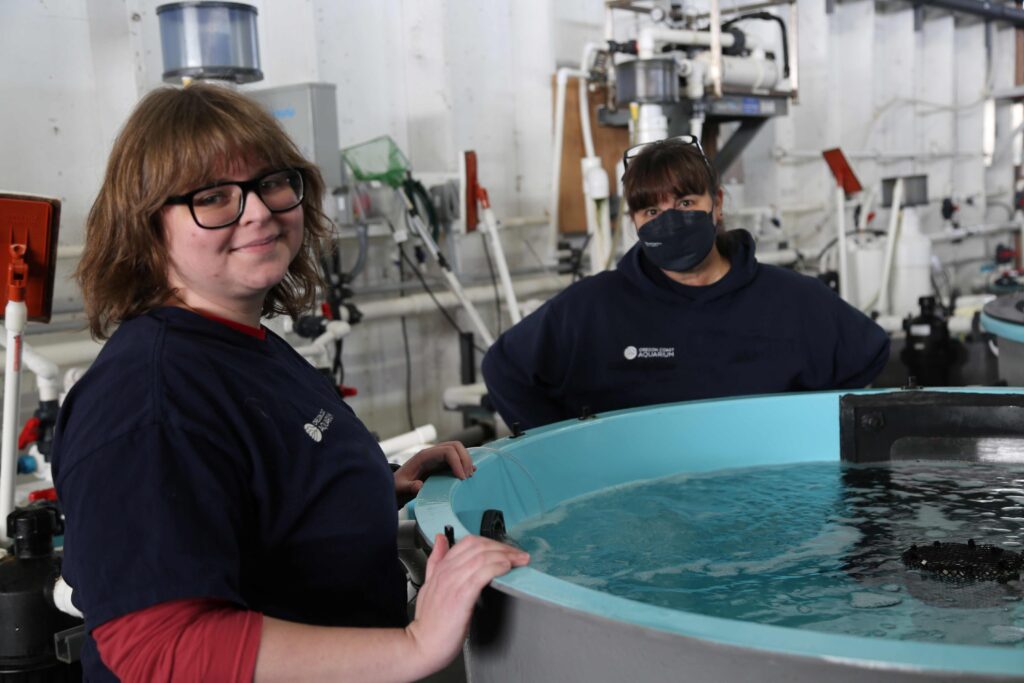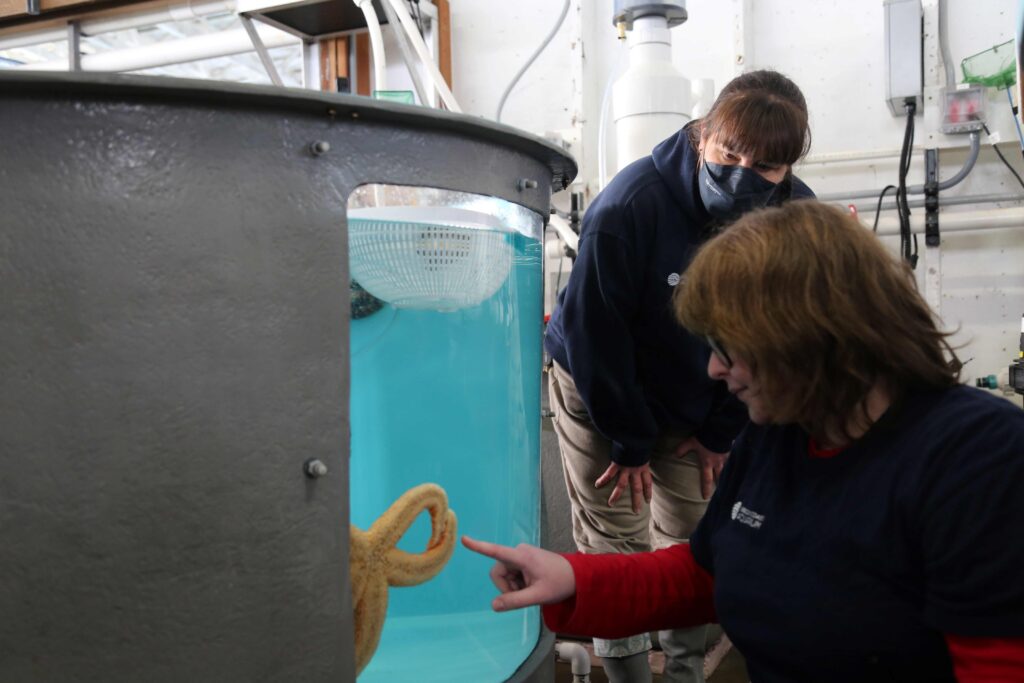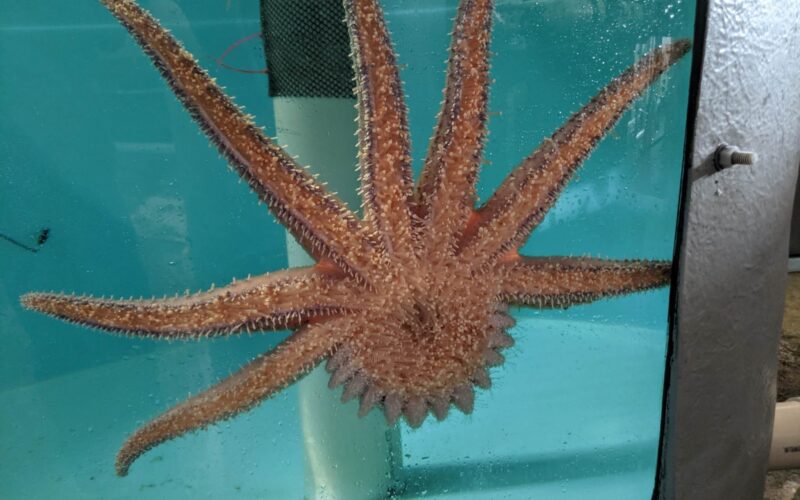In 2013 and 2014, Sea Star Wasting Syndrome caused a mass die-off of sea stars along the Pacific Coast. Near-unidentifiable gelatinous bulks, the remnants of stars having fallen to wasting, littered the seafloor. One of Oregon’s keystone species, the sunflower sea star (Pycnopodia helianthoides), was decimated, and is now listed as critically endangered.
Staff at the Oregon Coast Aquarium (OCAq) took the initiative and developed a treatment plan for Sea Star Wasting Syndrome (SSWS), a deadly set of symptoms that has caused the decline in sea star populations in the wild and can also affect sea stars that reside at the aquarium.

There is no known cure for SSWS, but thanks to the efforts of OCAq staff, there is now an effective treatment. Over the last two years, OCAq Aquarist Tiffany Rudek worked to develop a reliable method of treating ill, injured, or stressed sea stars. For many of the stars under her care, the treatment was the difference between life and death.
Rudek partnered closely with supervisor and OCAq Sea Jelly Specialist Evonne Mochon Collura to refine methods and submit the formal treatment plan, which may now be accessed online. In sharing their treatment plan, other researchers may repeat the protocol to prevent wasting in their collections.
The method involves supporting the star’s immune system, as opposed to treating myriad bacterial factors, and is applicable to physical injuries as well as wasting symptoms.
“Tiffany’s thinking is out-of-the-box, and that’s exactly what we needed,” said Mochon Collura. “She had the tenacity and creativity to develop the method until it worked, and now we have over two dozen stars saved, and counting.”
How to Treat an Ailing Sea Star
When stars show symptoms at OCAq, such as skin lesions and twisted limbs, they are taken to a quarantine area for Rudek’s treatment. The stars are placed into a cold water holding area and a buffer containing specific trace elements is applied. They are given an invertebrate-specific probiotic to prevent harmful bacteria growth and secondary infection, and undergo medicated baths to remove opportunistic parasites and fungus.
This is all completed and repeated with the goal of creating a low stress environment for the stars, and an unwelcoming environment for harmful bacteria and parasites.
So far, this method has proven successful with 17 sea stars of varying species, including the Aquarium’s three sunflower sea stars.
Rudek and Mochon Collura will continue refining the method and collaborating with other labs and sea star working groups. While the trial is in its early stages, and the sample size is relatively low, Aquarium staff are optimistic with these very promising results.
Rudek is looking forward to the impact the treatment may have in other facilities: “There are sea stars dying rapidly,” she said, “and what we’ve developed is working—there’s a chance it could help so many people and so many stars.”

About Oregon Coast Aquarium
For over three decades, the Oregon Coast Aquarium (a 501(c)3 non-profit organization) has supported marine wildlife and fostered environmental stewardship through its education programs, community partnerships, and rehabilitation efforts. Accredited by the Association of Zoos & Aquariums, the Oregon Coast Aquarium is consistently ranked as one of the top 10 aquariums in the U.S., providing visitors with opportunities to connect with 15,000 animals spanning 300 different species. The Oregon Coast Aquarium is located at 2820 S.E. Ferry Slip Rd., Newport, OR. (541-867-3474)
Press release and photos provided courtesy the Oregon Coast Aquarium on March 6, 2023




